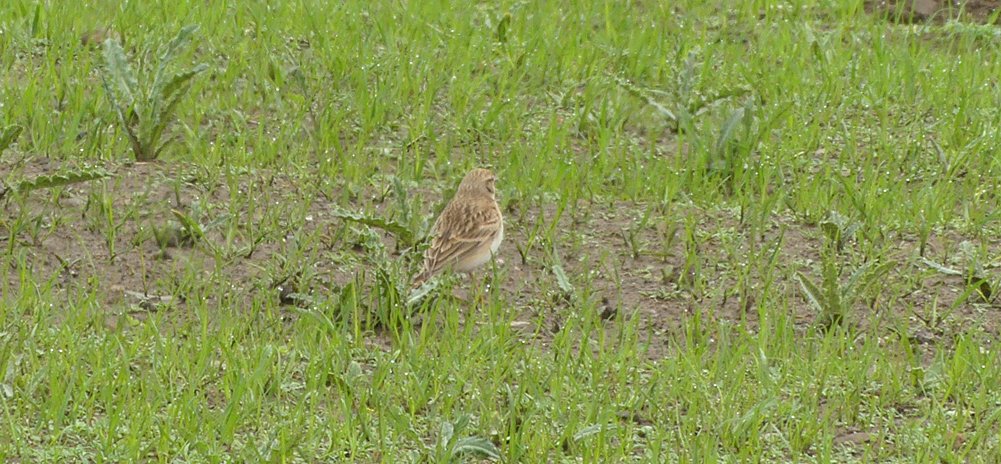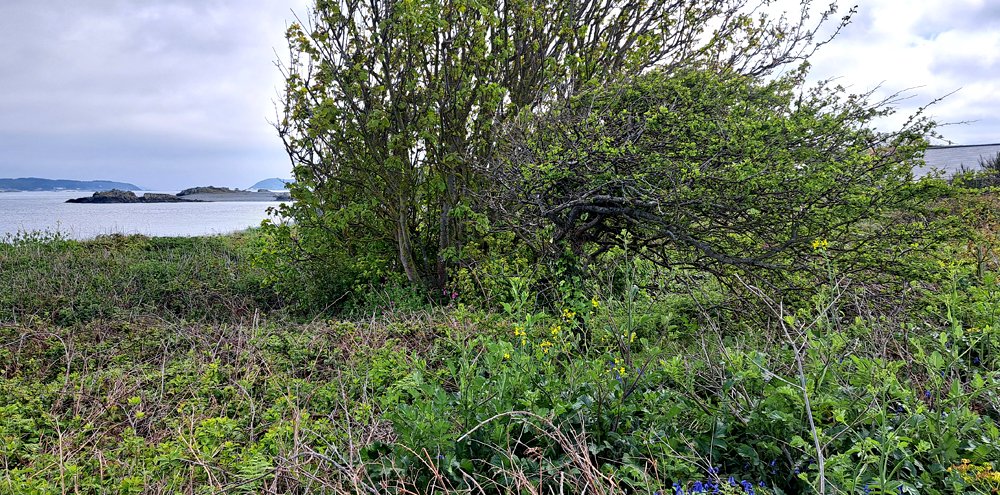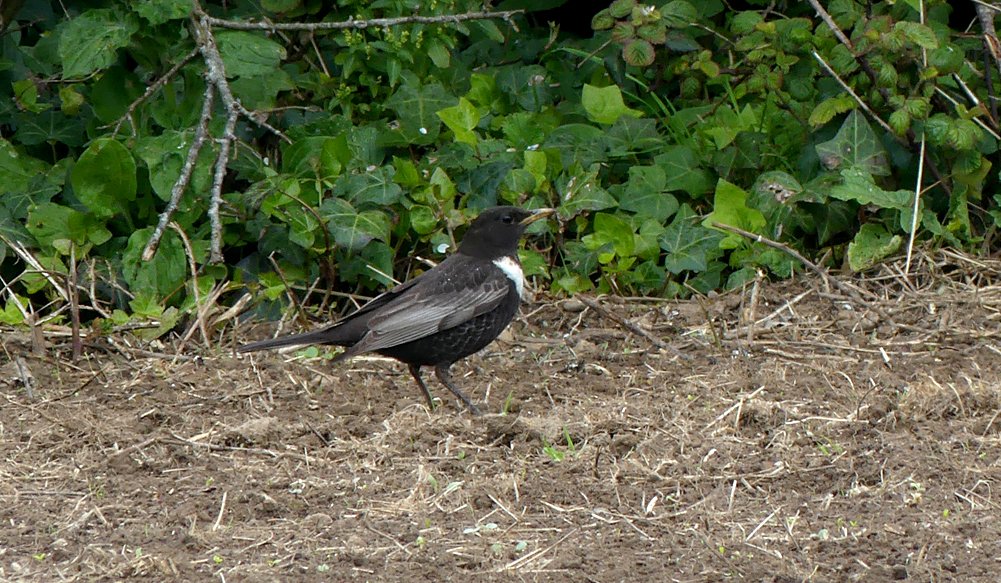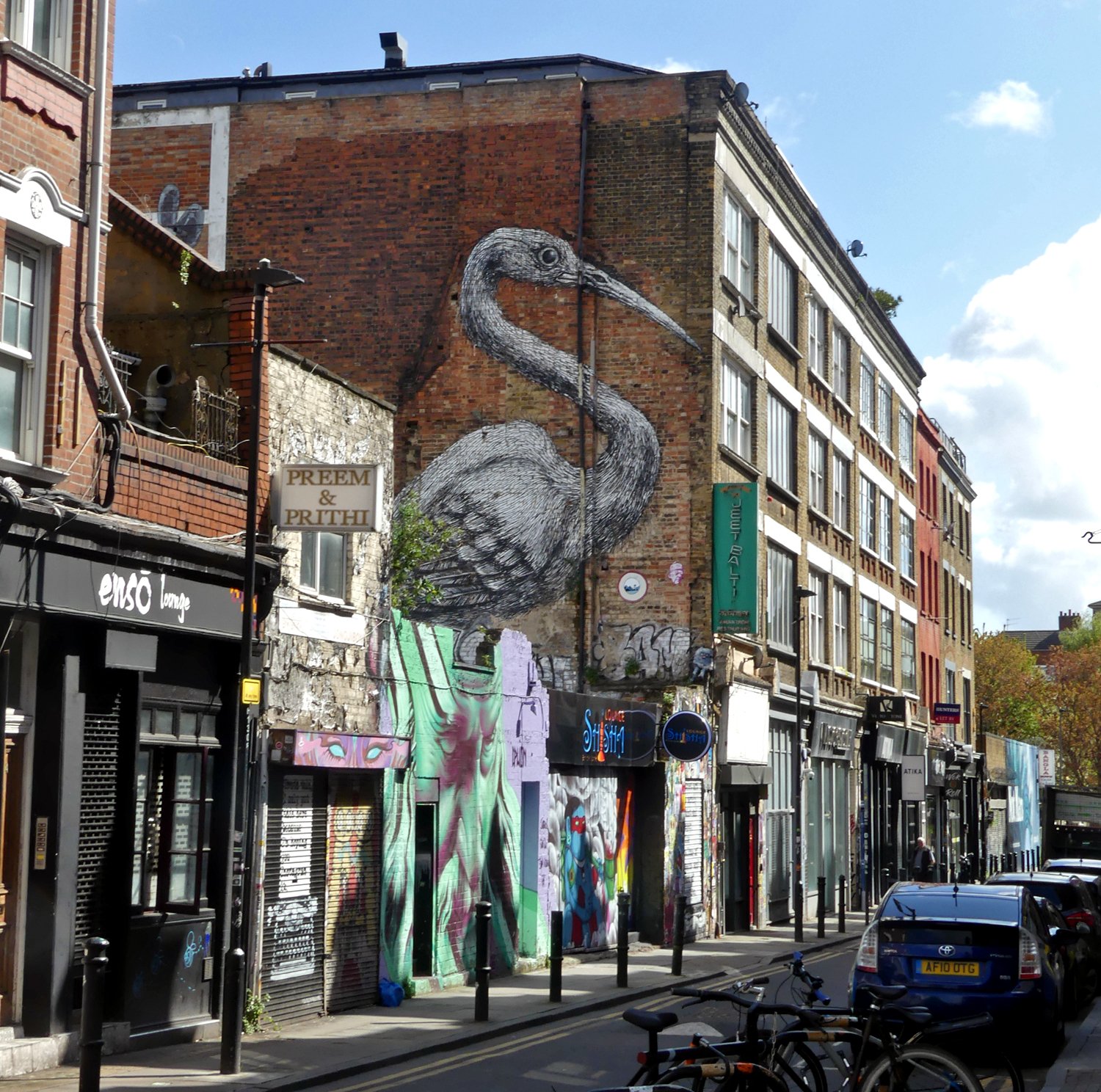April 2023 part iii
/The 30th April is the earliest date that the Guernsey bird race can be, as it is always the day before May Day bank holiday. We always prefer an early one because even a few days seems to make a difference at this time of year. Spring races through so quickly at the start of May, that migration can suddenly halt at the drop of a hat. We didn’t think that that would be the case this year however because, from our observations in the last few days, birds were still moving through in pleasing numbers. The bird race turned out to be quite a good one this year so I have devoted a single post to it, with thanks to Wayne, Mark & Chris, my long-term team-mates in the indefatigable and inimitable “Sultans of String”.
The weather forecast was good and bad. I did not like the sound of getting wet first thing in the morning but, on the other hand, a bit of rain on the day was always useful to ground some migrants. The wind was forecast to be really light and variable, which is excellent for great birding conditions, but not good for blowing things across the water. So we predicted that the day would be OK for finding migrants but we knew that there was not a lot of lingering winter birds around as there can be some years, such as late ducks or divers or waders.
Dawn at Pleinmont
We started out at Rue des Bergers just before first light where, quite surprisingly and quite unlike us, saw a hunting Barn Owl pretty easily. We sort-of expected it to be raining already but were pleasantly surprised that the weak front had not reached the island yet and so it was just cloudy. Even though it was still technically dark, we decided to head straight for Pleinmont in case there were some very early flyovers coming in ahead of the rain. After a while of listening we soon realised that there was not a passage happening but we did see a Wheatear on the deck which was “a good sign”. The first real surprise of the day was when a superb Long-eared Owl appeared in front of us, hunting around La Societe fields, giving excellent views in the half-light of dawn. We do tend to miss LEOs on the bird race because we get too tired at end the of the day and tend to leave them alone as not worth the effort. Getting both owls early on is definitely a bonus because it means we get home early (there are only 2 nocturnal species in Guernsey).
It then started to rain. Not too heavily however, and definitely bird-able. But it was very persistent and there were annoying periods of getting quite damp. However, we had no choice but to carry on and we did a circuit of the usual spots on the headland but we didn’t see a great deal of uncommon species. A few Manx Shearwaters passed offshore and we located singing Sedge and Willow Warblers in the rain, as well as a single Skylark, not a species we have had very often recently. A Long-tailed Tit spotted through the wet window of the car was potentially useful as it is a species that can waste valuable time. 40 species.
The mighty Sultans braving the rain at Pleinmont, waiting for Wayne to find us some Manxies
We exited the headland and thought we’d better have a run-around the western bays before the usual flocks of ****heads and their dogs flushed everything off the beaches. Spotting a useful lone Brent Goose below the Imperial, we then headed north, ticking off expected species as we went. A few Yellow Wagtails were present on the saltmarsh but Claire Mare was predictably empty. There were plenty of Sand Martins and Swallows resting on wires here, including a very obvious juvenile Swallow, perhaps recently fledged in North Africa or Southern Spain. The most unusual sighting here was a Fulmar which glided over our heads whilst we stood on the roadside. Despite many stops between Rocquaine and Vazon we barely saw a wader, just a couple of Common Sandpipers and Whimbrels at the Shingle Bank and a single Sanderling at Vazon. We hoped more may arrive during the day as waders can make or break a decent total. 58 species.
We next headed inland and went to Saumarez Park in case there was a decent warbler singing, but also because its a good spot for woodpeckers. We saw a Great Spotted Woodpecker quite quickly and soon got one of the best views of the species I’ve ever had in Guernsey as it searched for food in the tree just in front of us. We headed down to Grande Mare with the most useful species there being a Bullfinch calling from the undergrowth. It soon got to 9:30 in the morning and we were already up to 66 species.
Heading towards the Reservoir we passed a field of cows and a Cattle Egret was in tow - not a surprise nowadays as they are staying much later into the spring in the last few years. Our target area at the Reservoir was some pines where we ticked off Goldcrest, but even better, Mark spotted a Garden Warbler feeding in the willows on the water’s edge. 71 species.
The rain had now stopped and it was getting a bit brighter, so we decided to head back to the south cliffs where we hoped a few migrants might have come in. We pulled in at Les Tielles car park where the Ravens were croaking away. The fields there have been pretty promising recently, so I wandered off east down the cliff path a bit to investigate them. As I was scanning, a bird flew in from over my shoulder, seemingly in-off the sea, and flew across the field, almost directly away from me. I could not give an instant ID but I thought it looked pretty pale and interesting, and it gave off “rare vibes”. I picked out a white outer tail and was thinking maybe a bunting. It turned west a little bit towards the car park and it gave a faint lark-like call, and I quickly realised what I was looking at and shouted across to the others “SHORT-TOED LARK!!”. It turned again eastwards and the others picked it up in flight, and I thought it was going to just keep going. Luckily however, it flew low and pitched down in a field but one away.
I had somehow not picked up my camera so I had to run back to the car. I didn’t have time for getting great pictures, but this would have been difficult anyway due to the distance and the openness of the area. I did manage to stalk a little bit closer and got some identifiable snaps before having to run off back to join the race. Bird race etiquette means that if you find an official rarity which is clearly twitchable, then you must put out the news. This might mean that the other teams get a free species but you’ve got to consider that not every birder is doing the race. We were really chuffed to find a rarity on the bird race - always gives the day a nice “cherry on the top”. This is just the 15th for Guernsey and I have found five of them. 73 species.
Short-toed Lark - Les Tielles, 30 Apr 23
Short-toed Lark - Les Tielles, 30 Apr 23
Short-toed Lark - Les Tielles, 30 Apr 23
Short-toed Lark - Les Tielles, 30 Apr 23
Buoyed by this we moved to Pleinmont where we thought that perhaps more birds were coming in from the south like the lark did. Arriving, we drove by the bare field along the track east of the scramble track, and we spotted a lone bird at the top of the hill silhouetted against the skyline. It was a thrush-like bird but you couldn’t tell how big it was, but its shape did not look like Song Thrush or Blackbird. A few species were suggested and I was going for Redwing, but when it moved we realised it was in fact a Mistle Thrush - not at all expected at this time of year and not seen on the bird race since they used to breed here. Another quality bonus bird! A walk round the usual spots brought two new species - a Tree Pipit furtively crawling round the weeds at the very bottom of the Societe fields and a mighty fine male Whinchat at the end of the Weedy strip. 76 species.
Mistle Thrush - Scramble Track, 30 Apr 23
Mistle Thrush - Scramble Track, 30 Apr 23
Checking the time, we had to leave post-haste, as we had a date with a boat at the harbour. As last year, Mark had arranged a relative to take us on his boat to look for the auks to Herm, which saves a time-consuming trip on the Trident ferry. The sea was amazing and flat calm in the faint breeze and we had an awesome trip over. There were plenty of Guillemots in the middle of the Little Russel on the way across, and a handful of Razorbills and Puffins swam in the bays behind Herm. One of the Puffins just sat on the water right next to the boat - the best views I’ve ever had of the species and I managed some great photos. Another three easy ticks and it was only 2 pm when we re-docked at St. Peter Port. 79 species.
The sultans travelling in style for the auks
Puffin - Herm, 30 Apr 23
Puffin - Herm, 30 Apr 23
Puffin - Herm, 30 Apr 23
RAZORBILLS - Herm, 30 Apr 23
RAZORBILLS - Herm, 30 Apr 23
RAZORBILL - Herm, 30 Apr 23
By now there were not many obvious species left but there were still enough to keep us moving. Re-fuelling with caffeine at the Bridge we moved on to Gallotin Quarry where a Sparrowhawk raced past us and a Little Grebe was on the water, as well as a flyover Yellow Wagtail. Next we called in at Fort Doyle but we saw nothing new on land or sea, and so we tried Miellette where there are sometimes waders or terns to be seen. Neither was evident so myself and Chris wandered up the path a bit to have a quick check in the next bay. Walking back to the car, we chose an overgrown path and I put an odd bird up from just in front of me which was standing on the grass right in the middle of the path. It flew up and away, and dived into the bottom of a close-by bush. My initial mental arithmetic brought me to the conclusion that it could only really be a NIGHTINGALE.
This was a little incredulous as I have been birding here 25 years and I have never ever had a Nightingale in Guernsey as they are elusive little devils on migration. But the features I had noted were pretty conclusive, as I had actually seen it very close and clearly despite the briefness. Although I didn’t catch it on the deck, it flew up from the ground like a chat or thrush, but was too small and pale for it to be a Song Thrush. It was also a little large and long-tailed for a Robin, which was the closest species in general appearance. However the colouration was plain rufous-brown with reddish tones, especially on the tail. It wasn’t a Redstart either as the tail wasn’t that red and didn’t have the darker central feathers. The way it fanned its tail as it went up was quite distinctive.
Chris was next to me in an instant and I called over to Mark that I thought that I had a Nightingale. As he came over, the bird flew across behind the vegetation towards the right but no additional features were noted. After a pretty long wait, it flew out again and went left into the very bottom of a sycamore. As it did it just looked plain and brown with again, no distinctive features. This time I managed to get my bins on it when it briefly perched on a low branch. I could not see the whole of the bird but it was now in sunshine, and I could see that the upperparts were plain rufous brown and the underparts were plain off-white. It then dived down into dense cover and refused to come out. All in all, despite brief views, I was very confident in the ID and it becomes a new and overdue species for my Guernsey list. And since Chris and Mark also both saw the bird it would count for the race total - 82 species.
The path which the Nightingale flew up from
The tree that the Nightingale dived into never to be seen again, typical of the species.
Nightingale - My sketches of what I saw - not exactly crippling views but I’ll take it.
Moving on to Grand Pre, which can always be good for a migrant or two, we didn’t see anything new on our circuit but we had another Great Spotted Woodpecker. Returning to the car park at the end, I saw a falcon circling to the east which revealed itself to be an excellent Hobby. We tried Jaonneuse and then the Vale Pond, where we saw the Greenshank which we knew was there yesterday and had the good manners to stick around. Driving towards Rousse a Peregrine flew over the car, a species we thought we’d have got before 4:30. 85 species.
We had really all the expected species now, so it was just a case of driving down the coast and checking the west coast bays and headlands for any migrants and especially waders as we were still missing a few of those. When we were at Pulias we met an older visiting birder who told us that he had seen four Purple Sandpipers in the Chouet area. It was difficult to work out where he was explaining but we thought we may as well retrace our steps and have a look. We walked round all of Chouet but never did see any Purps but Wayne located a single Turnstone on an offshore rock, which was a big one we were missing. 86 species.
Returning to our bay-checking we were wondering where the heck all the waders were! But, at about 6:15 we finally found them and saw, at Richmond, Vazon, a Bar-tailed Godwit, plus a few Ringed Plovers and Dunlins. 89 species.
So we had a couple of hours of light left to try and get one more species to make the 90 but it was getting very dark and cloudy and a little more cold and windy. It almost felt like it was dusk and finding new birds was becoming quite unlikely. We headed to the Reservoir where we’d heard a Cuckoo had been reported calling earlier in the day. But we didn’t hear it, only seeing a few Cattle Egrets roosting on the boons. We drove to a couple more spots but it didn’t feel at all that we were going to get anything else. We were disappointed that we’d missed Swift but these are hit and miss at this time of year. So we knocked it on the head eventually, calling into the chippy for a feed before finally stopping at 8:45 as it was getting dark, thanking god that we didn’t have to look for bloney owls! So 89 species not the 90 we wanted but our best total since 2013 and some top quality birds were found. Overall, a successful and, more importantly, an enjoyable day spent birding with friends - can’t beat it.
The Sultans of String have now done 20 bird races. There has been a gradual decline in totals which we believe is mainly due to the decline in migrant birds in general. We believe we are “better” at bird racing nowadays but this is not obvious from the totals. However there does seem to be a bit of an upturn recently (albeit more erratic) and our 2023 total was our best for a decade.


















































